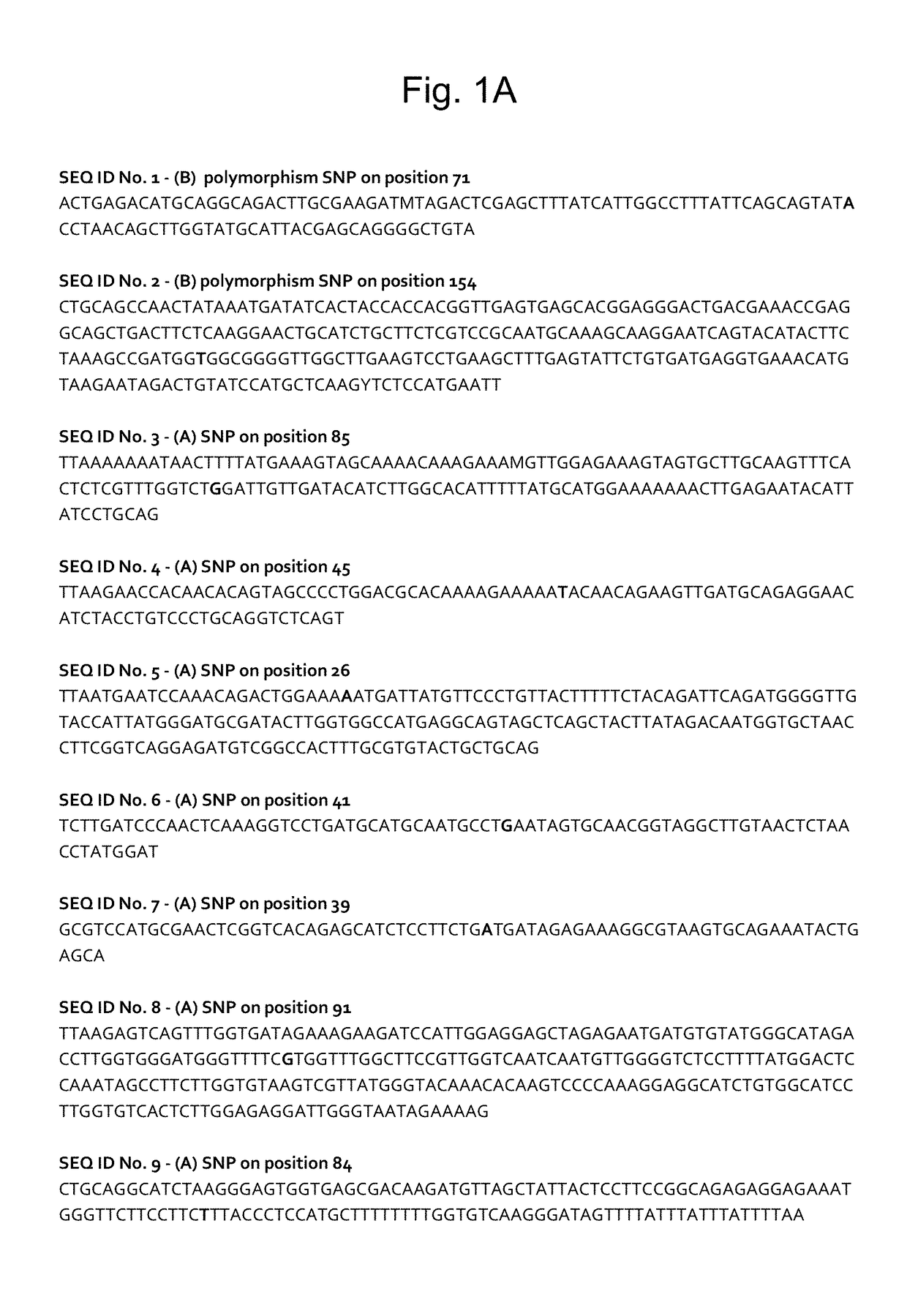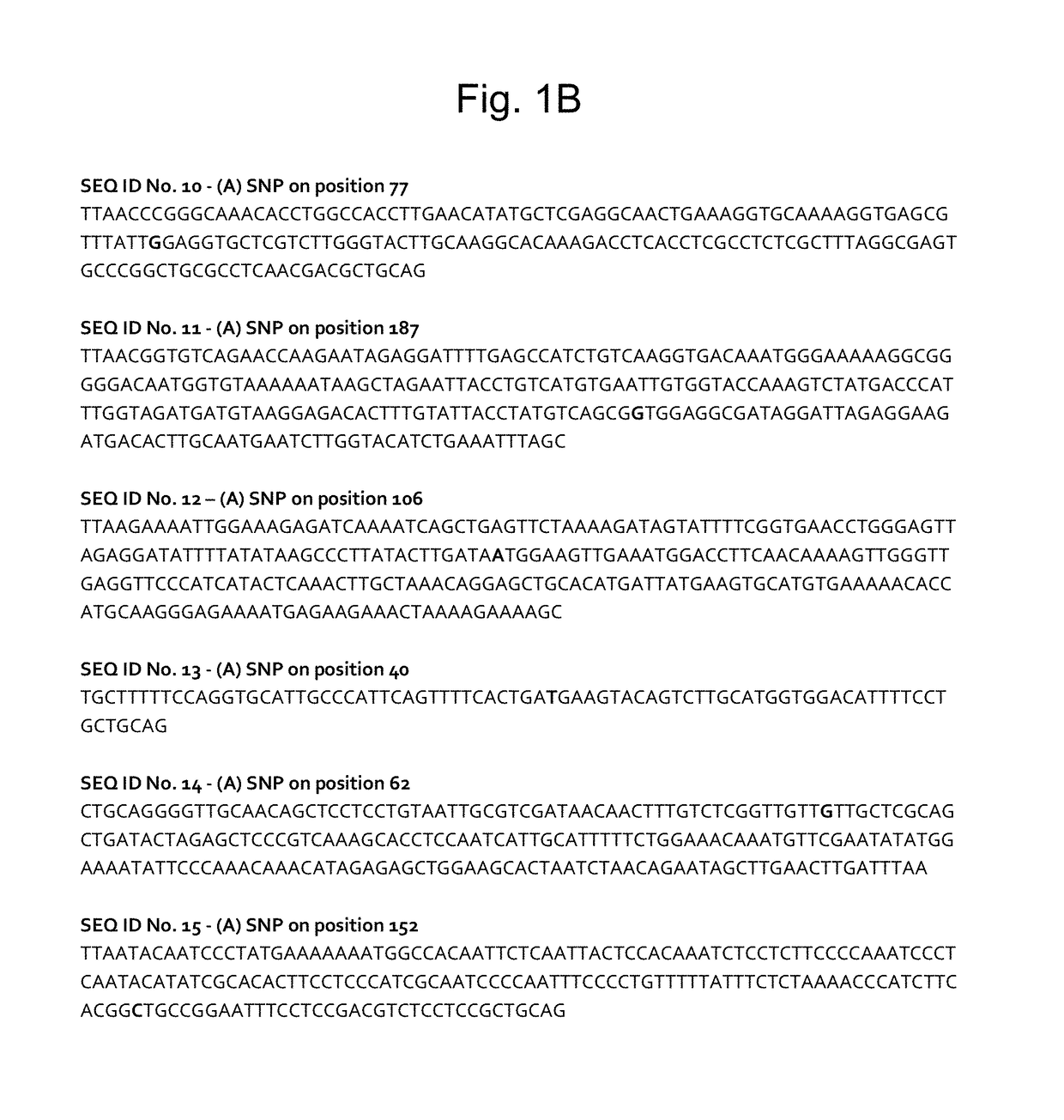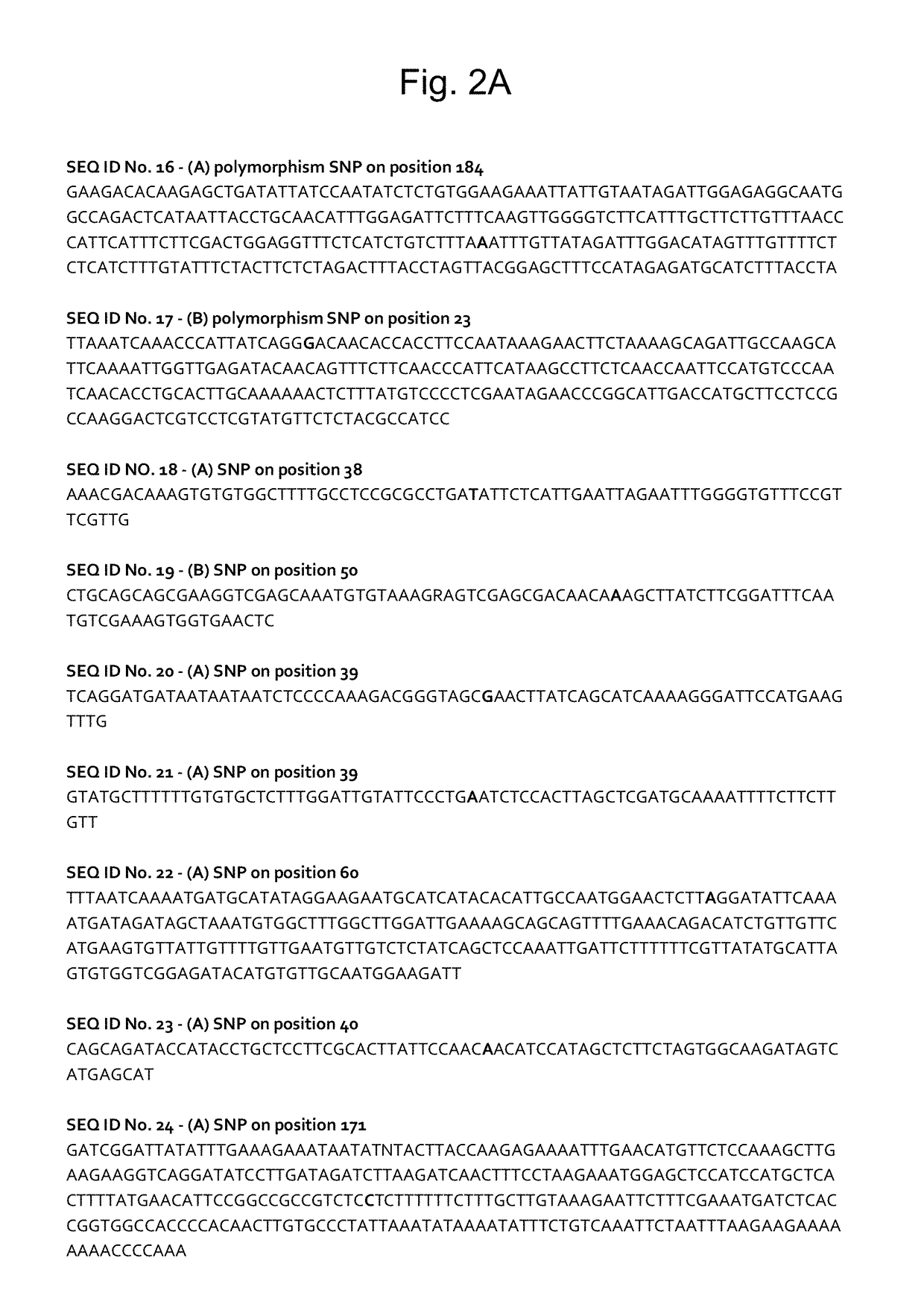Genetic basis for cucumber fruit having small seed cavity
a technology of seed cavity and gene, which is applied in the field of parthenocarpic cucumber fruit, can solve the problems of limited shelf life of products, not all vegetables and fruits are considered suitable for being combined into such pre-cut products, and faster deterioration
- Summary
- Abstract
- Description
- Claims
- Application Information
AI Technical Summary
Benefits of technology
Problems solved by technology
Method used
Image
Examples
example 1
Phenotyping of Small Seed Cavity in Parthenocarpic Fruits
[0109]Breeding material that had a small seed cavity phenotype in a parthenocarpic fruit was developed by using combinations of various germplasm sources, none of which had the ability to develop parthenocarpic fruits and also no small seed cavity was observed in these sources. However, during the breeding process this remarkable trait was observed, and these fruits were subsequently carefully analyzed.
[0110]Visual observation by the breeder leads to a reliable determination of whether a fruit has a small seed cavity or not, and this was how the breeding lines were developed. However, to quantify the small seed cavity, various measurement protocols were developed as well.
[0111]In one protocol image analysis was performed to obtain reproducible measurements of the surface area of a slice of a fruit and of the seed cavity of that slice. To perform the image analysis a software program known as ‘Tomato analyzer’ was used. This pr...
example 2
QTL Mapping
[0114]A population of plants segregating for the presence of parthenocarpic fruits having a small seed cavity was used for phenotyping and genotyping to determine the genetic background of this trait and for mapping the involved QTLs. To make sure the contribution of all sources was included subsequently BC2F2 generations, BC4F2 generations, and BC5F2 generations of different breeding lines that still segregated for the trait were involved in the mapping. To finalize and confirm the mapping also DH lines that are genetically stable were analyzed.
[0115]In a first round 91 SNP markers distributed over the whole cucumber genome were included to get a rough indication of the possible location of QTLs involved in this trait. Regions on chromosome 1 and 2 were identified in this way as potential candidates for the QTL location.
[0116]To define the QTL regions better, a follow-up mapping study still included SNP markers on all chromosomes, but focused on chromosome 1 and 2 by inc...
example 3
Moisture Content of Flesh and Seed Cavity of a Parthenocarpic Cucumber Fruit
[0118]To determine the moisture content of the fruit flesh and the seed cavity of parthenocarpic cucumber fruits measurements were taken from a number of materials. For fruits having a small seed cavity, three hybrids identified as 1316, 1317 and 1319 were used, whereby 1317 is deposited as NCIMB 42424; as a control Valle F1 RZ was used. From each line a minimum of four fruits was measured.
[0119]From each fruit that was to be observed a slice of 3 cm thickness was cut towards the top, a slice of 3 cm at the center, and a slice of 3 cm towards the end of the fruit. With an apple corer having a diameter of 9.17 mm, two punches were made from the flesh of each slice, and one punch from the seed cavity. This resulted in three 3 cm long punches from each slice. After this, each punch was lengthwise divided into three equal parts, ending up with six samples of 10 mm long from the flesh of each slice, and three sam...
PUM
| Property | Measurement | Unit |
|---|---|---|
| thickness | aaaaa | aaaaa |
| diameter | aaaaa | aaaaa |
| thick | aaaaa | aaaaa |
Abstract
Description
Claims
Application Information
 Login to View More
Login to View More - R&D
- Intellectual Property
- Life Sciences
- Materials
- Tech Scout
- Unparalleled Data Quality
- Higher Quality Content
- 60% Fewer Hallucinations
Browse by: Latest US Patents, China's latest patents, Technical Efficacy Thesaurus, Application Domain, Technology Topic, Popular Technical Reports.
© 2025 PatSnap. All rights reserved.Legal|Privacy policy|Modern Slavery Act Transparency Statement|Sitemap|About US| Contact US: help@patsnap.com



